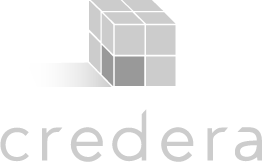by Alisha Janes
 The task of running a successful school, especially a successful middle school, is daunting. However, Joseph Mehsling, the principal of Altona Middle School, makes it sound easy. His leadership of Altona Middle School clearly prioritizes student achievement and rigorous instruction. The results are telling. Altona has earned an A+ for four consecutive years on Colorado School Grades.
The task of running a successful school, especially a successful middle school, is daunting. However, Joseph Mehsling, the principal of Altona Middle School, makes it sound easy. His leadership of Altona Middle School clearly prioritizes student achievement and rigorous instruction. The results are telling. Altona has earned an A+ for four consecutive years on Colorado School Grades.
Altona Middle School is located in Longmont and is a neighborhood school within the St. Vrain Valley School District. The school’s main focus is to ensure that students are prepared for high school, which it does by prioritizing literacy and numeracy. Mr. Mehsling notes that these priorities translate directly to the students’ schedules; students spend more than half of the school day in reading, writing, or math.
One thing that stands out about Mr. Mehsling’s leadership is that he has “high expectations in everything.” This motto is especially fitting when applied to the school’s pursuit of academic achievement. The front page of the school’s website iterates their commitment to standards-based education, noting that “Standards-based education is not a new fad, nor is it a reconstruction of past attempts at educational reform. Standards-based education is a system for teaching and learning that focuses on students becoming proficient in clear, measurable standards. For students and teachers in the day to day teaching-learning process, standards-based education means teaching and learning with the ‘end in mind’.” The parent/student handbook explains that even classroom tests are based on standards, ensuring that parents and students know exactly what skills a student has yet to master. The standards at Altona clearly reflect high expectations for what students will learn, as many 8th graders at Altona have already mastered Algebra I and are taking high-school level geometry.
Of course, the school’s success is not due to high standards alone. Mr. Mehsling accredits a great portion of the school’s success to the hard work of the school’s students and teachers. When asked his secret to finding and keeping great teachers, Mr. Mehsling says he simply looks for teachers who can do the job, will love doing the job, and fit within the schools culture of high expectations.
Besides its high level of academic performance, many parents and students are drawn to Altona’s musical offerings. More than 80% of the students at Altona participate in full-year band, orchestra, or choir. The school also offers a jazz band, pops orchestra, and show choir.
Altona Middle School was ranked 5th out of 503 middle schools in 2013 on Colorado School Grades, but you can bet Mr. Mehsling’s leadership and dedication has him gunning for a first place finish in 2014.
Alisha Janes is a fellow at Colorado Succeeds and is currently pursuing a Masters of Public Administration at the University of Colorado at Denver. Alisha’s previous experience include: coaching new teachers, teaching intervention lessons, and three years of teaching a Bilingual 5th grade class in Houston, TX.
 |
| 






